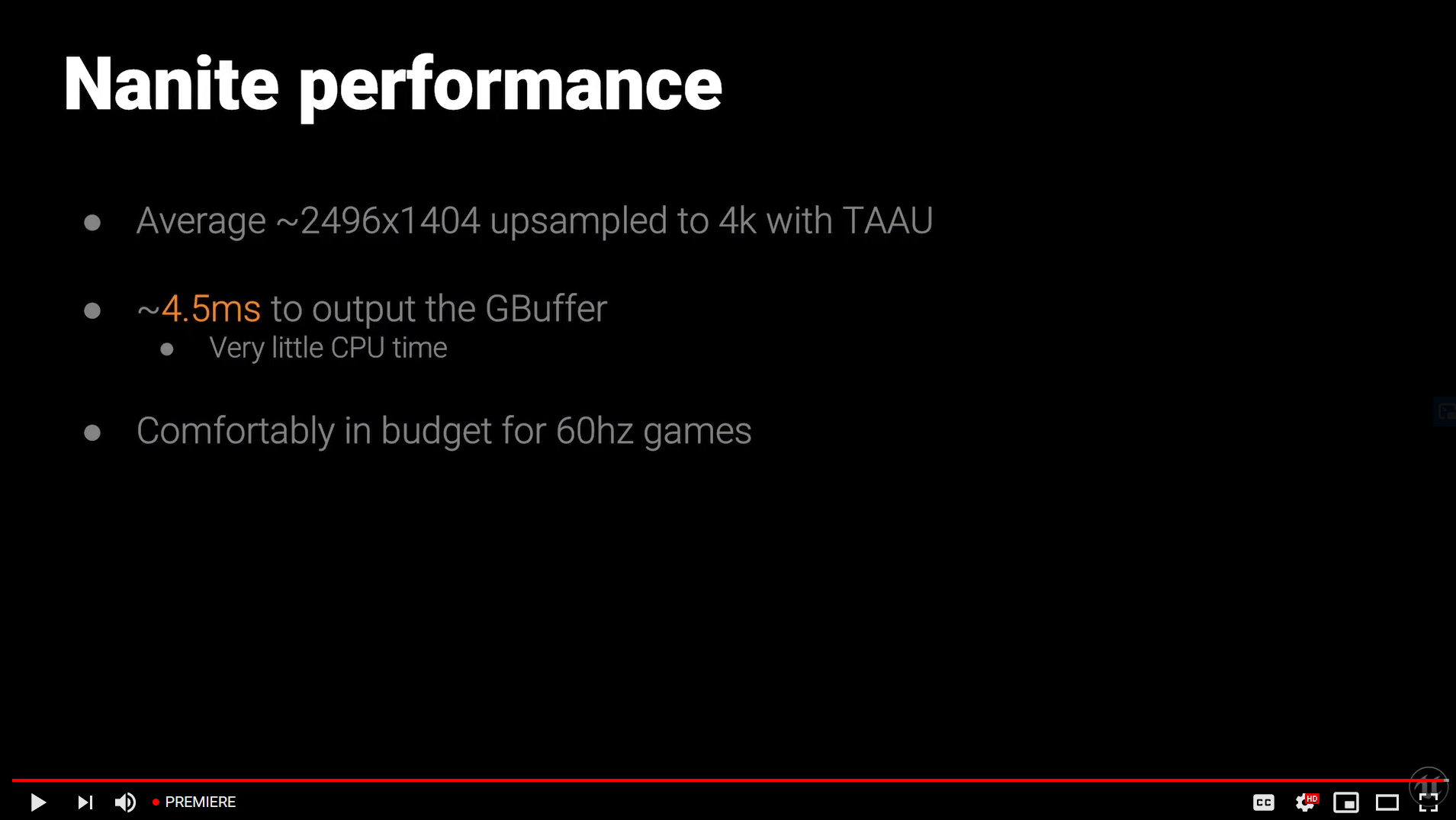https://www.pcgamesn.com/making-unreal-engine-5
Many details about Lumen
An obvious one was just how such results are achieved and whether or not they come with performance costs. Turns out that, in Nanite’s case at least, the opposite may be true. “Nanite has very different performance characteristics than traditional rendering pipelines and is able to make more efficient use of the hardware to achieve micropolygon detail,” vice president of engineering Nick Penwarden tells us. “In fact, enabling Nanite on existing scenes can be a performance win. I can say that the GPU time spent rendering geometry in our UE5 demo is similar to the geometry rendering budget for Fortnite running at 60fps on consoles.”
Lumen on the other hand “does have a runtime performance cost – it’s not free. We will offer several scalability options that developers can use to tune fidelity and performance to fit their specific needs.”
Many details about Lumen
Lumen supports all the development buzzwords – diffuse interreflection, infinite bounces, indirect specular reflections – at scales ranging from kilometres to millimetres, and all dynamic. For developers, it’s as simple as moving a light source in the editor, and lighting will immediately appear as it does when the game runs. This will save buckets of time and energy over waiting for a lightmap to bake, and enable more precise on-the-fly adjustment of lighting for effect.
Last edited:



